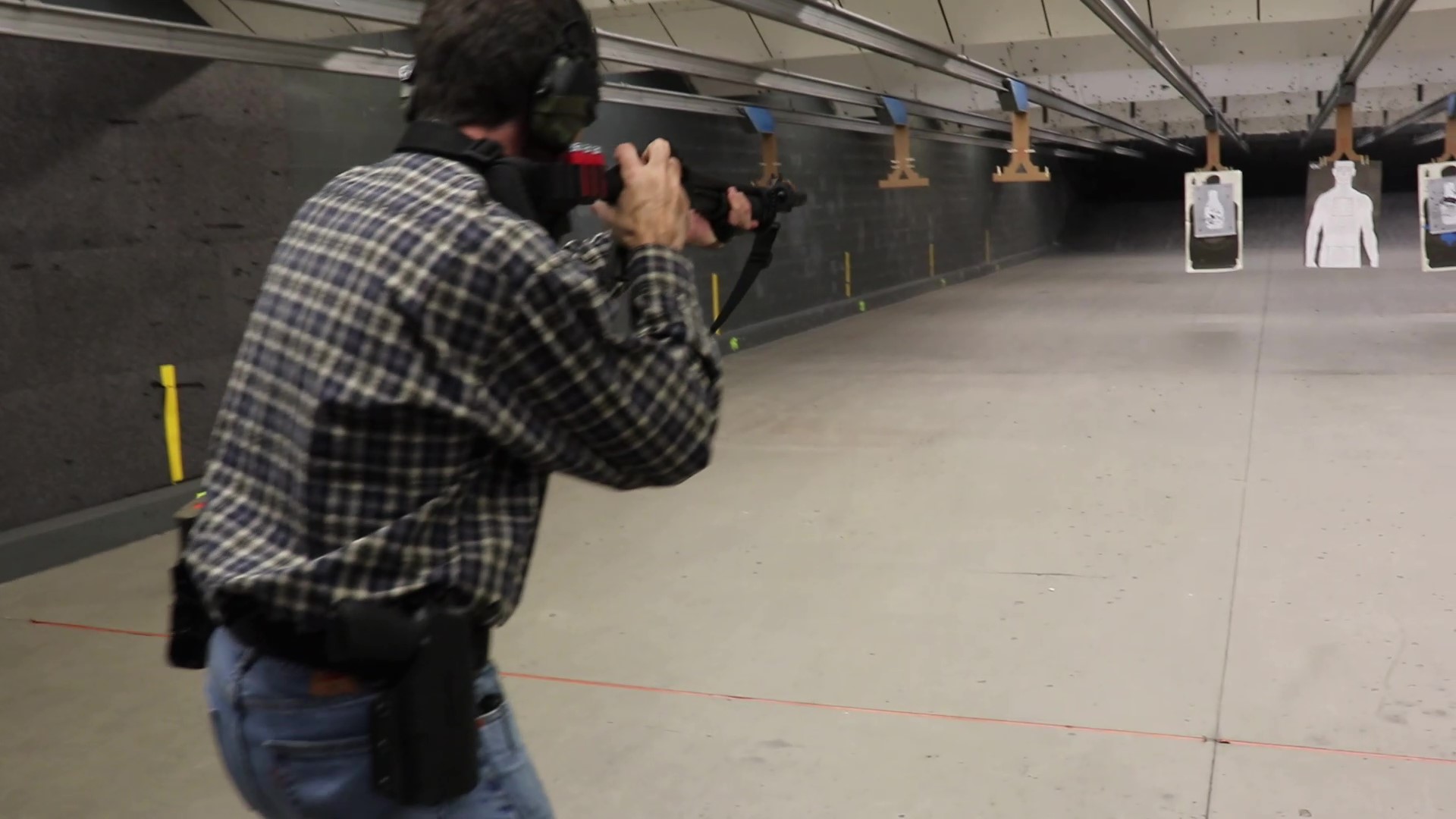THE TRANSITION
Intermediate to advanced tactics include being able to transition from a long-arm to a handgun. There are several instances where this is a necessary skill set for the tactical operator. The most common reason is because the long-arm has stopped working or when the long-arm may not be practical to use. In this video, we see the transition from a pump-action tactical shotgun to a handgun.
In order to accomplish this safely and effectively there’s a couple of foundational concepts that must be understood for the effectiveness of this tactic. First, the operator should be skilled enough so that they can feel that the firearm has stopped working and they must immediately take corrective action. If the operator hasn’t noticed that the firearm has stopped working (a stoppage), he will likely repeat an ineffective action. For example, if the firearm stops working and the operator hasn’t noticed but continually tries pressing the trigger on the firearm, valuable time is wasted. In a real gun-fight this could cost you your life. The problem is compounded when the operator hasn’t had enough experience in stoppages and he has to confirm the stoppage by looking at the firearm to figure out his next step! Time is better spent by getting a firearm back in operation and on target, moving out of harm’s way, or preferably BOTH! Another foundational concept is the availability of cover and the distance from the threat area. The closer the threat, the more immediacy for getting a firearm back up and on target. The operator must make a decision; do I clear the stoppage or do I transition to my handgun? The answer will be predicated on variables such as the proximity to the threat, the type of threat, the availability of cover, the skill level of the operator and the complexity of the stoppage. This is exactly what the operator should be thinking about, not why isn’t the gun working? Keep in mind some of the following examples of detecting a stoppage: There is a distinct difference in felt recoil when a shotgun goes “click” and not “bang”, a distinct feeling when the slide of a handgun locks back rather then moving forward to chamber a new cartridge, and a distinct noise transmitted through the buffer tube of an AR15 type when the bolt chambers a new cartridge and says “ping” rather than when the bolt locks back and says, “pong”. Get to the know the feeling of a stoppage.
In this drill, the shotgun operator fires his shotgun until it is dry and then immediately transitions over to the handgun. The technique for the transition is such that the safety on the shotgun is engaged and the muzzle is placed in a safe direction. Yes, the safety goes “On”. This happens simultaneously as the operator uses his support hand to lower and secure the long-arm to his belt line, wasting no time. That’s exactly what is occurring in the image. If operator is really proficient, they’ll reach for the handgun and locate it through felt muscle memory in order to allow for an efficient draw while finishing the transition. In the video, the operator chooses to draw and adopt a two-handed grip on the handgun, mostly due to the distance from the target. Another option, depending upon the skill set of the operator, that may expedite the presentation process and minimize the “pendulum” effect (the long arm tugging the operators neck from momentum) is to draw one-handed. If you also notice, the use of a tactical sling facilitates a safe muzzle position when it’s not held. This also allows the operator easy access in order to reacquire the grip and firearms controls. Finally, it places the long-arm within arm’s reach. This is one piece of equipment that can help immensely.
The last foundational concept is that the best transition is one that doesn’t occur. So maintain good operational skills by keeping the chamber loaded, the firearm fed with ammo and in good working order so that stoppages and thus transitions are limited.
This is a skill set that we practice routinely in our Advanced classes. We utilize and repeat a variety of drills to simulate real-world situations so that the operator makes safe and tactical decisions, and how to best work through a stoppage.



